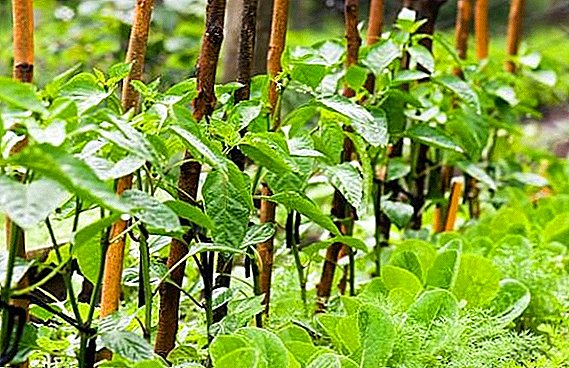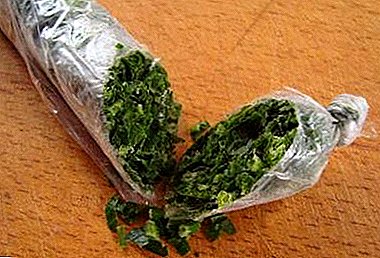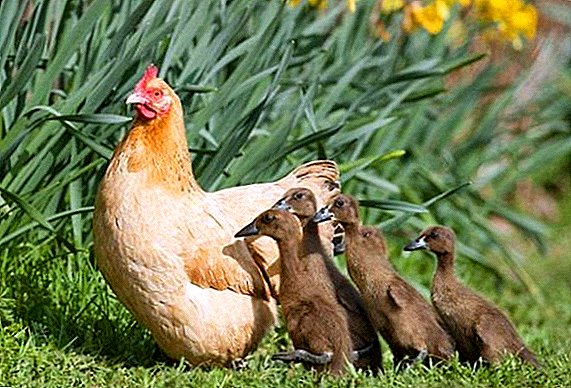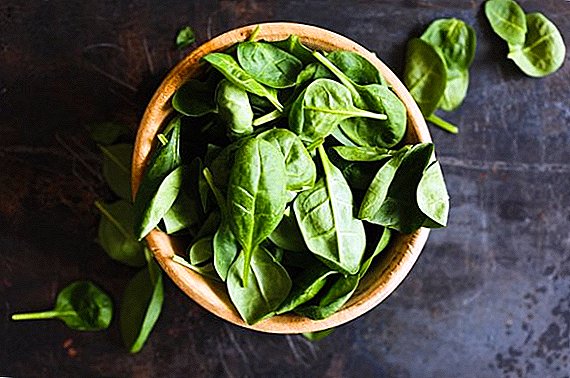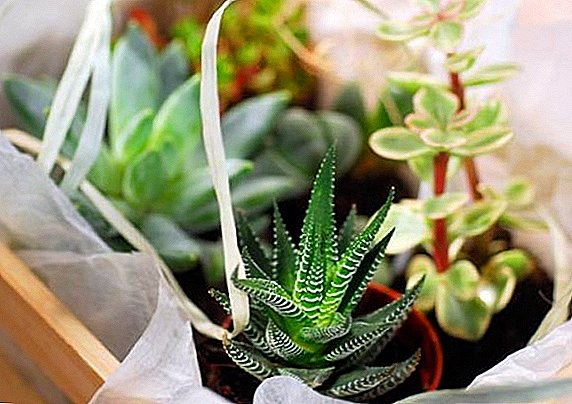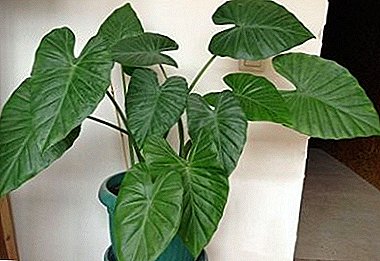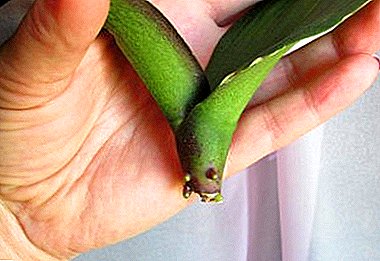
Orchid is a fastidious plant that is actively grown at home. But some newcomers commit a series of wrong actions, because of which the flower begins to die. If the sheet plate fades every day more strongly, then the reason for this may be the death of the root system. But this problem can be solved if we proceed to radical actions. Read in the article what to do with an orchid, if there are no roots already, whether it is possible to put a flower in water to form a new root system, and also about caring for a flower after restoration.
Why can the root system disappear?
Under normal conditions, the belamen protects the measles system from drying out in the heat and sun., as it allows moisture to absorb the orchids directly from the air. But in the case of impaired care, the measles air system can dry out.
The following reasons may affect this:
- use for watering too heavy water;
- incorrect amount of fertilizer;
- rare watering.
How to understand that she is not in order?
 An orchid can only be reanimated if it can be detected in time that its root system is out of order.
An orchid can only be reanimated if it can be detected in time that its root system is out of order.
This can be done by the following features:
- darkening of the air roots, they become too soft or dry;
- the leaf plate has lost its elasticity, which does not return even after moistening;
- traces of green algae or sporulation formed on the walls of the container;
- when the root system has decayed, the aerial part of the orchid is loosened.
The consequences of its absence for the plant
It is the root system of the plant that absorbs all the nutrients from the soil.necessary for the growth and development of the flower. If the roots begin to disappear, then the food of the orchid is broken, it begins to wilt and soon dies.
In addition, the lack of adequate nutrition leads to a decrease in the protective forces of the culture, as a result of which it is quickly exposed to the influence of diseases and pests.
Step-by-step instructions: how to reanimate a flower at home?
Let us examine how to grow roots at home, help them gain vitality and restore the plant.
Inventory preparation
To reanimate the orchid, you need to prepare:
- sharp knife or scissors;
- Activated carbon;
- manganese solution.
Knife or scissors must be pre-sanitized.to prevent orchid contamination.
Removing the flower from the pot and pruning the root system
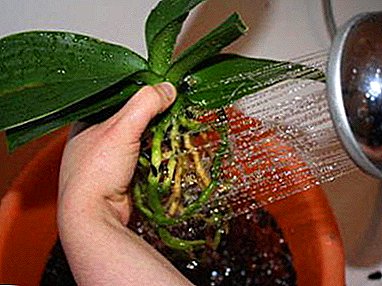 After preparing all the tools, it is necessary to remove the plant from the pot, take the remnants of the soil and visually assess the extent of the problem.
After preparing all the tools, it is necessary to remove the plant from the pot, take the remnants of the soil and visually assess the extent of the problem.- Rinse the roots with clean water at room temperature.
- Completely remove all rotten tissues with scissors.
- Place the slices to treat with activated carbon powder.
- If a mold was noticed during the inspection, then the plant should be carefully treated with an aqueous solution of potassium permanganate.
We offer for viewing a visual video about orchid care and cutting rotten roots:
The choice of method and its application
Sheet top dressing
For this feeding, use special liquid preparations that saturate the plant with nutrients through the suction capacity of the leaves. Sheet top dressing allows all the plant system to work normally.when the roots are not able to supply nutrients. It is recommended to slightly moisten the soil before foliar application. To carry out the manipulation early in the morning or late in the evening, as the scorching sun rays during the daytime along with top dressing can lead to chemical burns.
Important! When you make feeding you can not fall on the buds and flowers.
If there is a stem and leaves
Let us examine how to root the plant in this case. There is no need to grow roots for orchids, and only then transplant in the prepared soil.
Consider how resuscitation occurs in water:
- In a water solution of growth stimulator, lower the plant with a growth point, previously separated from rotten roots.
- In a bowl of boiled water to lay a tablet of activated carbon.
- Orchid move to the basin, where the water temperature is 25 degrees.
- During the growth of roots in the water in the room should be high humidity and excellent air circulation.
- From time to time you need to wipe the leaves with a solution of succinic acid or sugar solution.
- As soon as it is discovered that a small amount of water has evaporated, then in order to successfully grow the roots, it is necessary to add liquid to the required level, while the plant is placed neck up. Only the temperature difference should not exceed 3 degrees.
If there is only a stalk
 Consider whether it is possible to save the plant in this case, how to stimulate root growth. To save a flower is very difficult, but with proper care there are chances. To reanimate a plant, it is necessary to carry out the same processing as in the previous version. Only plant a plant need to moss. Watering is rarely carried out (for one moistening, use about 20 ml of liquid. Moss perfectly retains moisture and contributes to its structured distribution. As soon as the first roots are grown, the orchid should be transplanted into the ground.
Consider whether it is possible to save the plant in this case, how to stimulate root growth. To save a flower is very difficult, but with proper care there are chances. To reanimate a plant, it is necessary to carry out the same processing as in the previous version. Only plant a plant need to moss. Watering is rarely carried out (for one moistening, use about 20 ml of liquid. Moss perfectly retains moisture and contributes to its structured distribution. As soon as the first roots are grown, the orchid should be transplanted into the ground.
Presence of algae
Algae on the roots are formed due to lack of minerals or natural light. They worsen soil aeration, change its chemical composition and release toxic components.
In the formation of green algae on the roots of a flower, you must immediately take steps to save it.
We offer to see a visual video about algae in the roots of an orchid:
Procedure:
- Rinse the roots of the plant several times in 0.1% potassium permanganate solution.
- For orchids, in which the root system requires regular lighting, there is one trick: you need to wrap a transparent pot with foil. Then the light rays will not affect the roots and algae, causing the latter to die.
- In case of severe damage, wash the roots with a bleach solution.
In greenhouse conditions
If there is a window greenhouse, in which it is possible to maintain the optimum temperature and humidity, then the chances to reanimate the orchid will increase.
Procedure:
- At the bottom of the greenhouse to lay the clay, and on top of it - well steamed sphagnum moss.
- In such a soil, mix sheet rosette. When the orchid manages to grow roots to 4-5 cm, then in the greenhouse from this time it will be necessary to maintain the following conditions: humidity within 75-95%; temperature should not exceed +23 ... +27 ° С; bright lighting support for 12-14 hours a day.
The probability of success after the procedure is 80%. But this can be achieved under the condition of thorough care, which consists in regular airing at night, watering as the substrate dries out, and maintains the microclimate.
Care after resuscitation
 In order for a reanimated orchid to recover as quickly as possible and continue its active development, the following peculiarities of care will be required:
In order for a reanimated orchid to recover as quickly as possible and continue its active development, the following peculiarities of care will be required:
- Provide lighting - 12 hours a day.
- Temperature range should be 22-26 degrees Celsius.
- Maintain constant humidity in the room. For these purposes, you must buy a special device that creates fog.
- Watering the plant is extremely rare, only under the condition of complete drying of the earth.
When to wait for recovery?
After 2 months, orchid roots should grow back and reach 6-7 cm.. Only in this case, the orchid can be transplanted into the substrate.
When is it impossible to save the plant?
It will not be possible to save the orchid if the case is strongly neglected, and the rot has already struck not only the roots, but the stem itself. In addition, reanimate culture will not work without regular and thorough care.
Dying off the root system of an orchid is a frequent case, which mainly occurs in beginners who do not comply with the basic rules of care for the culture. But, if you find a problem in time, choose the appropriate method of resuscitation, know how to save an adult plant or baby, then your orchids will have sluggish leaves and dry roots in the past.


 After preparing all the tools, it is necessary to remove the plant from the pot, take the remnants of the soil and visually assess the extent of the problem.
After preparing all the tools, it is necessary to remove the plant from the pot, take the remnants of the soil and visually assess the extent of the problem.
